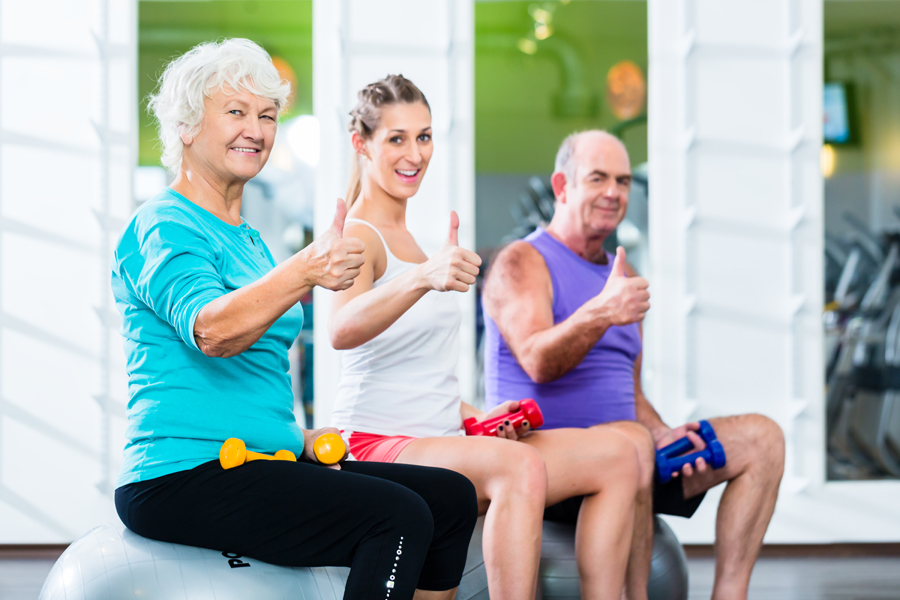Caregivers: The Often Overlooked Gold Mine in the Senior Market
Caregivers… what does that mean? Obviously, it means someone who takes care of others. In this case, seniors 65 and older. Now you might say that 65 is a very young age to need caregiving, but not if you have a chronic condition like Parkinson’s, COPD, Multiple Sclerosis, even Type II Diabetes. What happens when these seniors suddenly can’t navigate through their life like they used to and even simple things like getting to the doctor and grocery shopping become extremely difficult to manage? They find they need a break after doing these simple tasks. At this point, they either have their adult children take on these tasks or hire someone to do them. These people — the Caregivers — are a huge untapped market for medical fitness professionals to provide our valuable services.
Do you have connections to this market? They tend to be overlooked as they are not the end-user of our services. Yet, they hold the key to introducing us to pre-qualified clients. There is a huge trust already established between these caregivers and their relatives or employers. The client values and relies on their recommendations, therefore, it is very advantageous to cultivate a presence in their world.

As with all targeted marketing, where do they hang out and what are their needs? Did you know there are entire associations geared specifically toward caregivers with a subcategory of the adult children, or “parents taking care of parents”? If you didn’t, you need to. It is where the goldmine begins, and the subcategory of caregivers we are going to focus on. I have been a caregiver with both of my parents and with numerous clients I’ve worked with. When you tap into this market, you find yourself becoming a caregiver as well. If you are great at establishing trust, you too become a trusted resource for referrals. This is a compelling reason to develop a network of preferred medical practitioners that hold similar values and approach towards care.
From the biopsychosocial aspect of where these caregivers are, they are stressed out from providing care for both their parents and their own children as well. Their parents will fall under the category of Condition Impacted Dependent© to Extensively Dependent and Frail©, meaning they need assistance or improvement with their IADLs (Instrumental Activities of Daily Living). The caregiver demographic will be working a full-time job and juggling their own children, they have very full plates. They literally will not have the energy or time to research and find a qualified professional who can provide in-home medical exercise services designed to make their lives easier. They will welcome any respite in managing their parents’ condition; improving function is added frosting on the cake.
When it comes to getting noticed, start with your message.
- Preventing further decline – how valuable do you think that is to stressed-out caregivers?
- Increasing their parents’ ability to function more independently can prevent further decline, allowing them to take on more of their own IADLs and in the process keep their cognition.
- The capacity to bounce back after setbacks is instrumental to all the people involved.
- The biggest take-home is that it will reduce the caregiver’s anxiety of having to care for their parent.
- Have your materials ready to educate people on what medical exercise is and specifically what the benefits are to the caregiver and the client’s lives.
Marketing Plan
- Research groups that support caregivers, specifically adult children of seniors (see resources)
- Offer presentations on how-to’s. Build fall resilience, improve strength for grocery shopping, resources on balance training, presentation on 10 best exercises seniors can do for function. Make sure you have these ready to go, it will save a lot of stress later.
- Have a PDF ready of your services and costs. The caregiver might be tech-savvy, but they will need to have something easily accessible to show to their parents
- Hone your empathic listening. When a potential caregiver calls you up, listen. A lot of times this technique will put you above the competition. Seniors love to chat, it is how they make connections and establish trust. I know that if a trainer is constantly interrupting me or seems to have divided attention when talking to me, they are certainly not going to be listening to my rambling parent/client.
- Network within your community. Join a local chamber of commerce, look up villages and volunteer your time.
This is just the tip of the iceberg, we haven’t even covered other categories of caregivers, CNAs, housekeepers, assisting hands companies, etc. That and more is covered in-depth in the Geriatric Fitness and Lifestyle Specialist online course, available through MedFit Classroom.
Sharon Bourke has been involved in the health and fitness industry for more than 28+ years presenting, teaching and coaching in fitness clubs and private studios throughout the Washington metropolitan area. She holds certifications in Medical Exercise Specialist, Personal Training Pre-Postnatal fitness, Fitness for Arthritis, and Multiple Sclerosis. Sharon founded the Life Energy Foundation,to utilize her extensive experience and network to create exercise and behavior modification programs and resources to help people avoid becoming immobilized from their chronic conditions.



 The biggest question fitness trainers need to ask themselves is “Why do you want to work with the chronic populations?” Is it because:
The biggest question fitness trainers need to ask themselves is “Why do you want to work with the chronic populations?” Is it because: